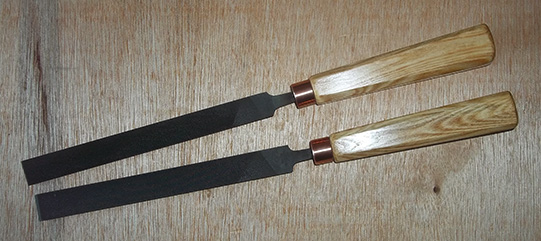This mostly happens between dips into the can.
There's your problem right there. Actually there are three problems here: working directly from the can, the cut and the brush.
Ideally you don't apply any finish by dipping the applicator into the original container. Yes it is extremely commonly done, but it's still bad practice. This is just about OK for waterbased paints, just about, I wouldn't recommend it literally for anything else. It's an especially poor idea for any fast-drying finish, particularly those with a fast-evaporating solvent like shellac has — at the end of a long working session what is in the can is not the same as when you started, it is now more concentrated.
Secondly, just because shellac comes in a can readymade doesn't mean that's the ideal dilution to apply (same thing with varnish, which is regularly diluted to make it more user-friendly). In fact pre-mixed shellac can be quite a strong 'cut', the traditional term for the dilution rates of shellac, and it can benefit greatly in being diluted to a less-concentrated version for application, a 'lighter cut'. I don't know how universal this is but some common tinned shellacs are sold as a 3lb cut (very strong), and it's frequently preferred to apply it as a 1lb cut, requiring that you thin the commercial product quite significantly which obviously can't or shouldn't be done in the original container.
Thirdly, shellac can be applied by brush and for certain jobs this is the right way to apply it. But it's not the ideal application tool for shellac when tackling large, flat surfaces. Shellac is the classic finish for being applied by a traditional method, commonly known today as French polishing. Now this is one of those OCD/I-have-way-too-much-time-on-my-hands techniques, but it was developed to give stellar results and it still can. It's just loads of work. Doing this full-on is not something for the faint at heart, a proper French polishing job requires hours of effort over at least a few days; the results are considered worth it by some, but to be clear I am not recommending it because shellac is no longer the only way to get that sort of look. Which leads me to...
Why use shellac in the first place?
In a way shellac is now obsolete. What it was relied upon for historically is no longer the case — it was the best finish available for fine furniture then, that's no longer true. If the finishers of the early 19th century had had access to sprayguns and lacquer that's what they would have used and that is what would now be considered "the most beautiful finish in the world" by traditionalists and connoisseurs, not shellac.
I'm not anti-shellac, I like it myself and use it regularly where I value its fast drying time. But it can be a troublesome finish to work with (other readers see this previous Question on issues related to shellac and humidity), it is tricky to apply to a high standard on larger pieces, but perhaps most importantly it provides relatively poor protection to furniture:
- it is hard, but a little too hard (it is brittle);
- it is very prone to damage from water (you get clouding, and note it can be almost instantaneous);
- and of course any alcoholic beverage will soften or dissolve the finish depending on the strength of the drink, leaving visible ripples or raised rings in the finish once it dries.
None of those are issues with even an inexpensive varnish as available in any hardware store! These are scratch-resistant but not brittle, almost totally waterproof and alcohol doesn't bother them. And varnish is far easier to apply to a high standard, in large part because of the relatively slow drying time.
So, my advice would be to use shellac for jobs where it is a useful part of a finishing regimen (e.g. acting as an intermediate coat between dissimilar finishes, as sanding sealer), or when used alone primarily for smaller jobs where its very fast drying time isn't so hard to deal with. This is one reason shellac is still an excellent choice of finish for woodturners and it's why I use it as a final finish on tool handles where I want a glossy finish, such as the handles on these files I restored:


